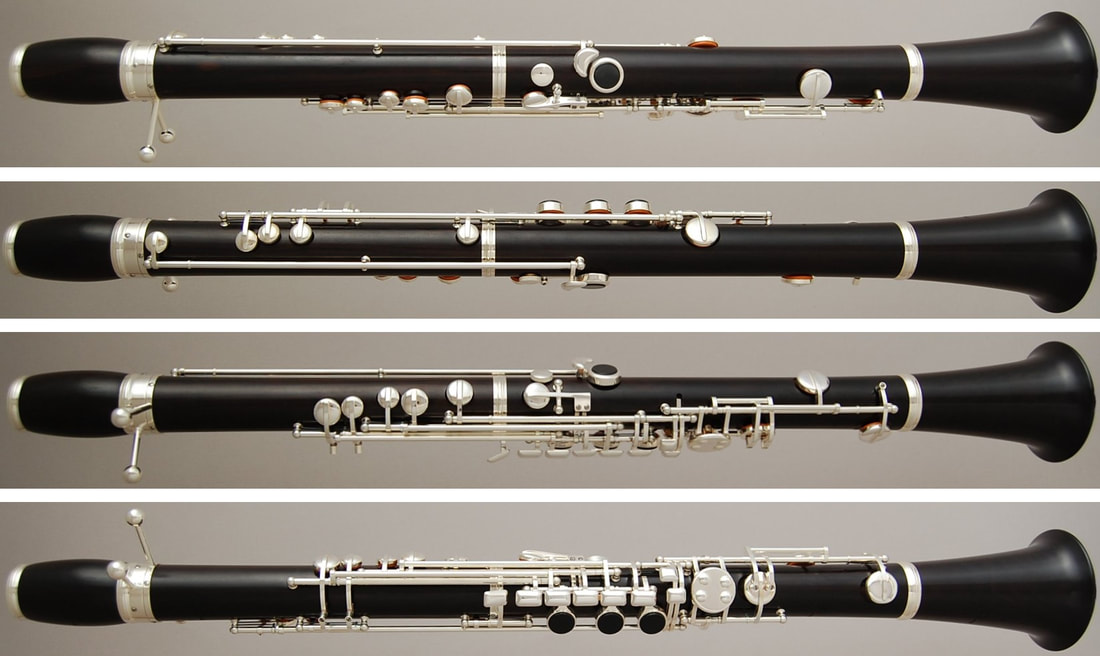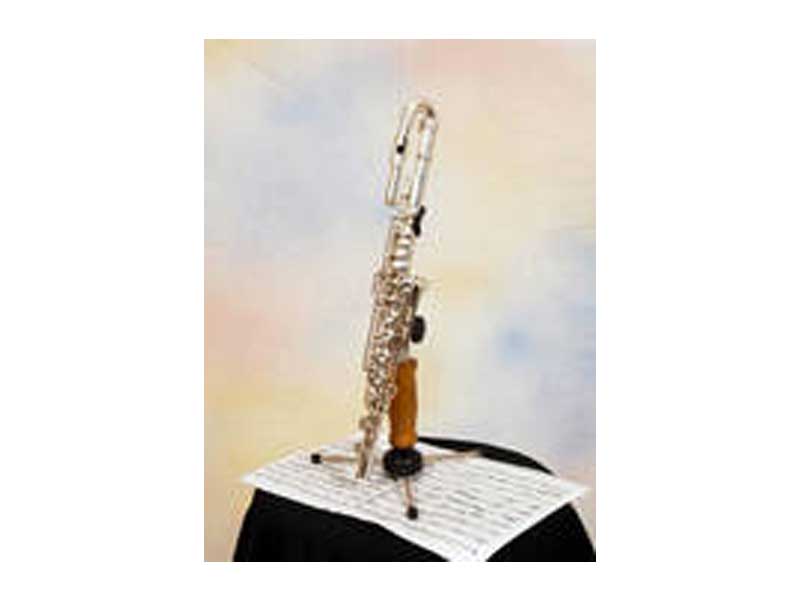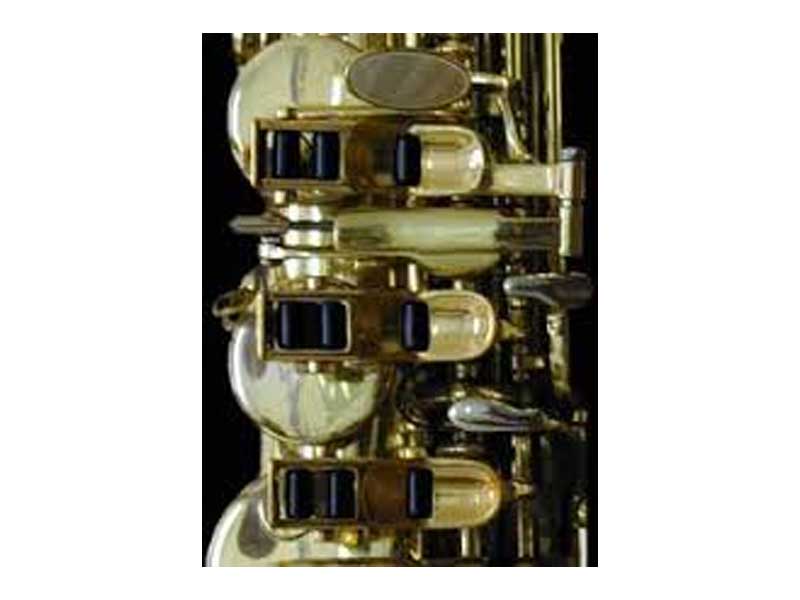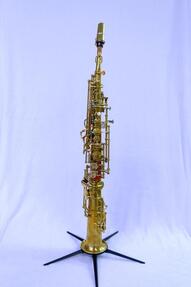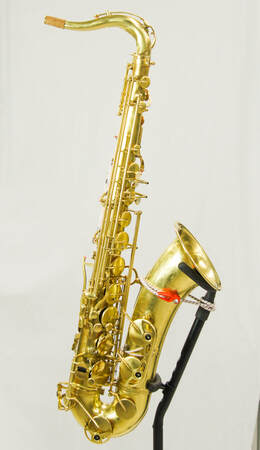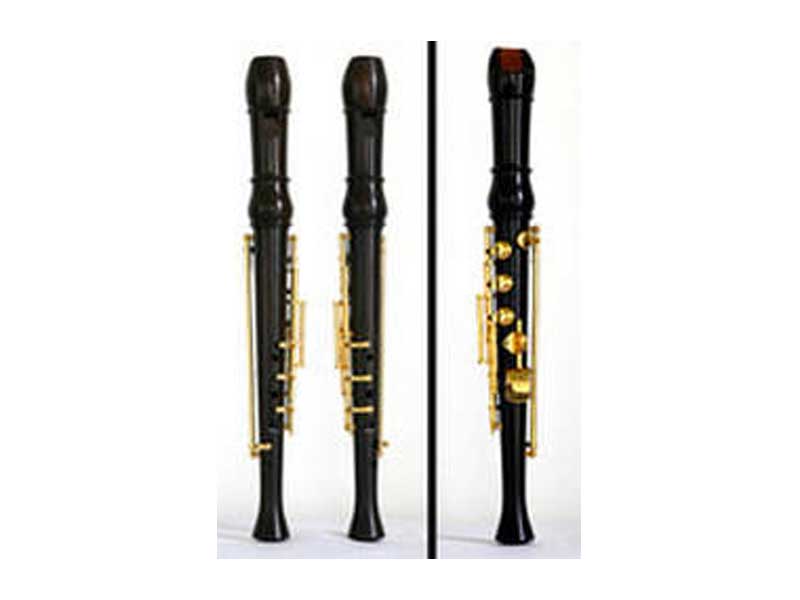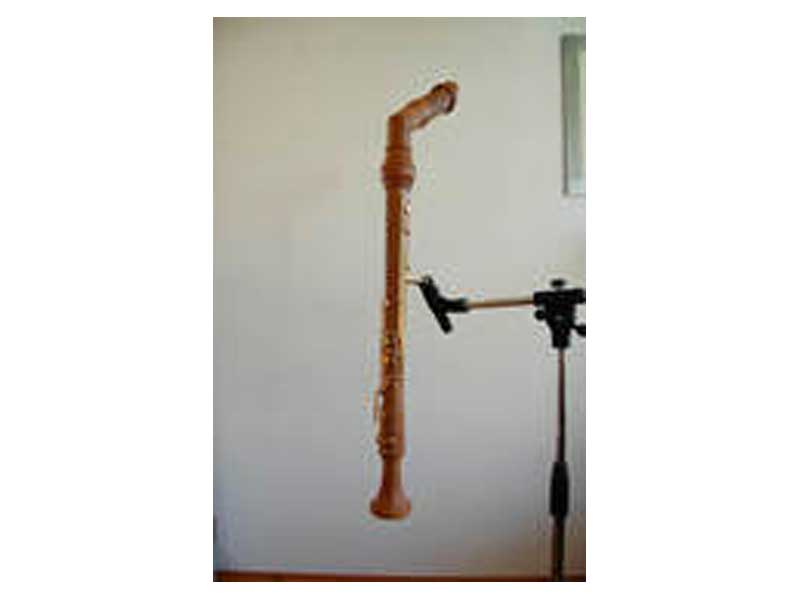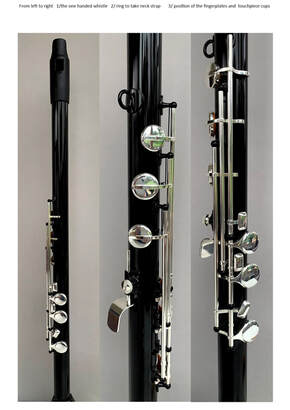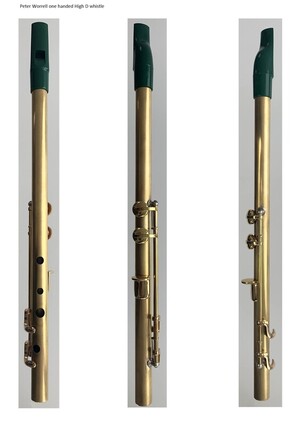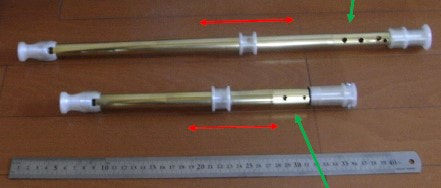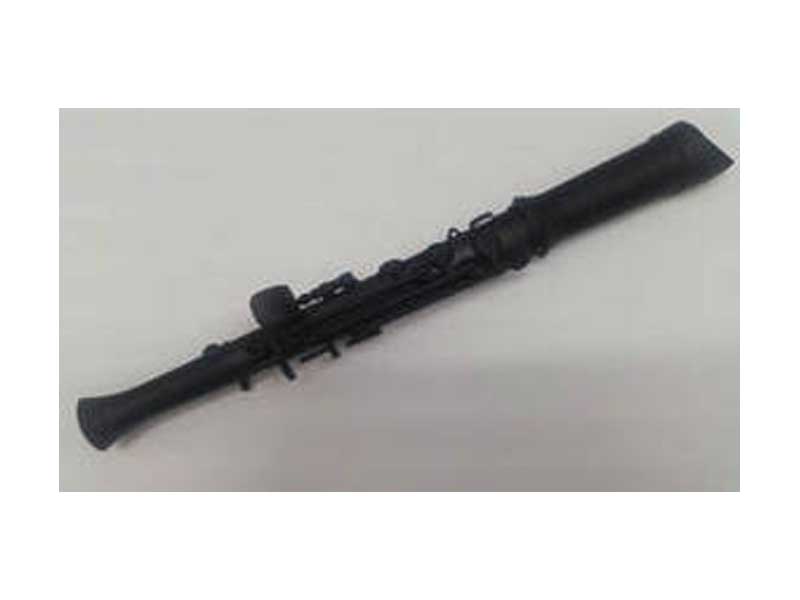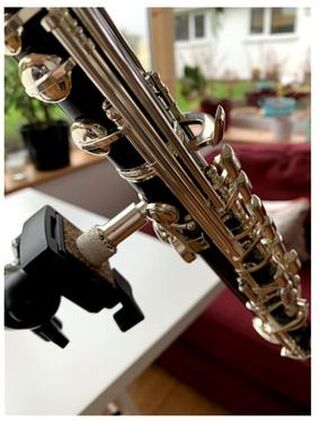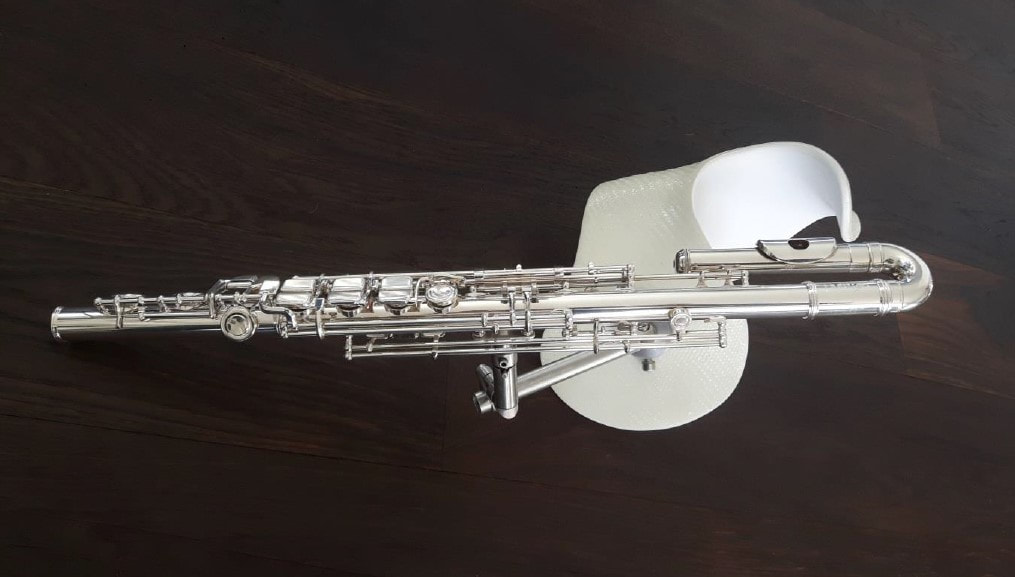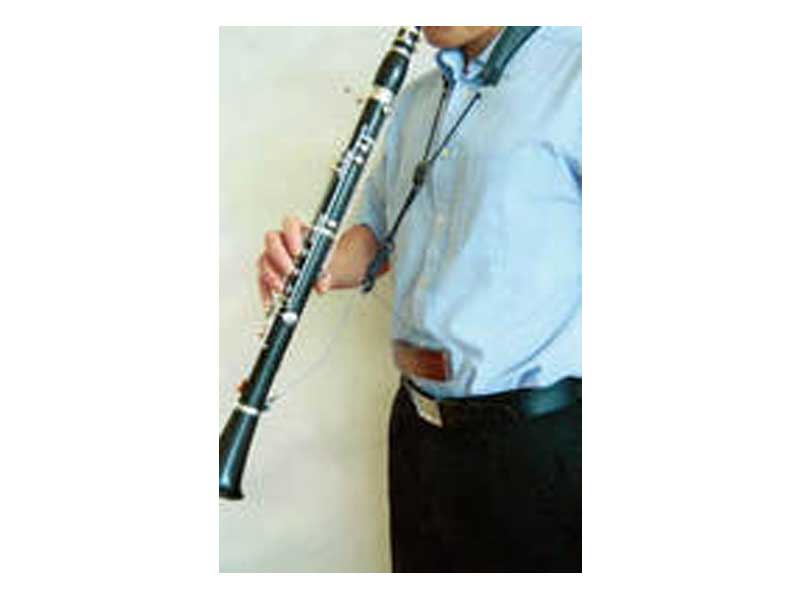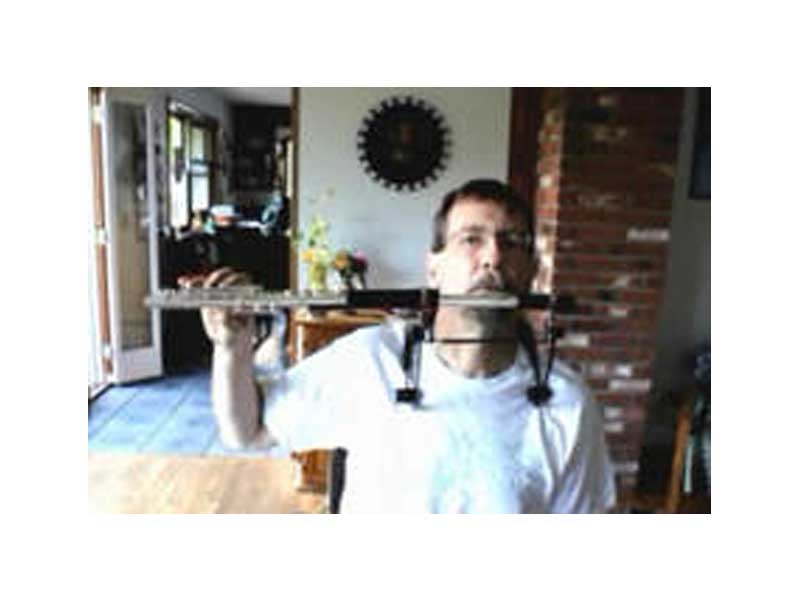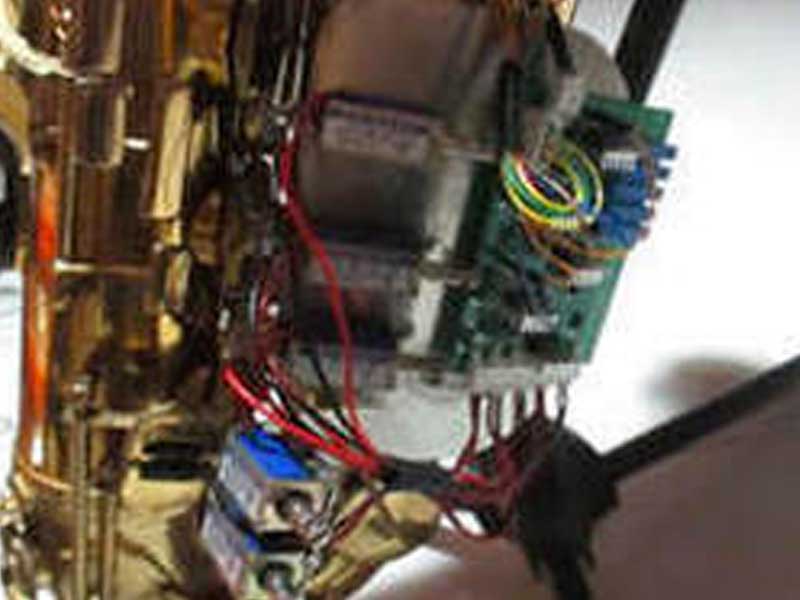Woodwind InstrumentsWoodwind instruments and enabling equipment brought to life by the OHMI Competition or an OHMI commission.
|
The One Handed Clarinet
|
This clarinet has been designed by Peter Worrell for a one-handed musician. This is not an adapted instrument. This is a fully chromatic instrument and has a range from Low E to High F. The key work is designed so that it all can be mirrored for Right hand and Left hand models. The entire instrument is handmade in Peter’s workshop in Norfolk and is made to the highest specification. The clarinet body, bell and barrel is made from African blackwood, the traditional choice of clarinet makers. The key work is silver plated and the pads are Premium Deluxe leather pads.
|
The One-Handed Flute
|
Maarten Visser. created the flute for Edit Van Der Burg, who suffered serious brain damage. Edit can now play everything she could before on her flute and she is still improving.
|
The One-Handed Toggle-Key Saxophone
|
Created by Professor David Nabb of the University of Nebraska and Stelling Brass & Wind of Kearney, Nebraska, USA.
|
One-Handed Clover Leaf Tenor and Soprano Saxophones
|
Like most woodwind instruments, the diatonic scale is played by opening a row of holes in the tube wall. Side holes may then be added for full chromaticism and trills. Maarten Visser's saxophones use ‘reverse action’ on the upper keys to close the holes when at rest, together with carefully positioned extra keys that then allow the entire range of the instrument to be played with one hand.
|
The One-handed Gold Series recorders
|
The recorder has been developed for students who are only able to use one hand, and it’s available in right and left-handed versions. The addition of extra key work gives the player access to notes that the missing hand would normally play. The bottom half of the instrument is the same as a standard recorder. Levers in between each hole on the lower half of the barrel control keys on the top half. These may be operated on their own or by using bars in front of each hole while covering the holes with the middle of the fingers. This ingenious mechanism allows performance over the full range of the recorder.
Key work is made by Peter Worrell and the recorder is available to buy from Aafab. |
The One-handed Bass Recorder
|
Peter Worrell is one of the world’s most renowned makers of woodwind instruments. The bass recorder is an addition to the family of one-handed recorders he has made, that started with the Dolmetsch Gold Series. Pearwood is used for the barrel, while all the keywork is handmade in brass.
Additional key work has been added to compensate for the stretch required to cover the holes in the standard instrument. Attention has also been given to the double holes on the main joint to obtain the tone and semitone. Click here to see more. |
The One-Handed Low D Whistle
|
This Low D Whistle has been designed by Peter Worrell. The body of the instrument is brass with additional key work is attached to soldered pillars. The body is stove enamelled to give it a hard-wearing surface. There is an adjustable thumb rest and ring to allow a sling to be attached. The standard “pipers grip” has been replicated in this instrument as the spacing between holes is quite wide.
|
The One-Handed High D Whistle
|
The High D Whistle is a popular folk instrument. This adaptation by Peter Worrell is for right-handed use but it can be created in a left-handed version by mirroring the key work. The body of the instrument is a brass tube and the pillars that take the key work are soldered onto the tube. The body and the key work are in a brass finish in this example but could be made in alternative finishes. There is a fixed thumb rest on the rear of the instrument. The traditional whistle has six holes and does not require use of the little finger. In the adapted version the hand position is changed to utilise all four fingers and then key work is added to the final two holes.
|
The Slide Recorder
|
This instrument has been designed by Takehiro Otsubo and uses the sliding principle of the trombone but consists of a tube with holes and a covering tube which slides to reveal all or some of the tone holes as required. In addition, the instrument can be placed on a wooden frame with a long wind pipe so that the slide could be operated by the foot if hand use was not an option. The fipple and other white parts in the image are 3D printed.
|
The One-handed 3d-Printed Recorder
|
Following a commission from the OHMI Trust, Paul Yeomans developed the 3-D printed one-handed recorder using computer-aided design and the 3-D printers of BCU’s Jewellery School Technology Hub. The aim was to accurately model parts to produce an entry level instrument at an affordable price. One-handedness is achieved by the addition of extra key-work that gives the player access to notes the missing hand would normally play. The bottom half of the instrument is the same as a standard recorder. Levers in between each hole on the lower half of the barrel control keys on the top half. This ingenious mechanism allows performance over the full range of the recorder with just one hand.
|
Woodwind Accessories
Flute/Clarinet Floor Stand
|
Peter Worrell has designed a stand using some standard components such as a cymbal stand and a camera tripod connector but combined them with bespoke equipment to allow the support to be fully adjustable. The same principle has been used to attach a connector to Maarten Visser’s one-handed flute.
|
Over the Shoulder Flute Mount
|
Thomas Tschirren has used his previous OHMI Competition winning idea of a moulded shell to support a trombone and applied it to the one-handed flute. Recognising that, for wheelchair users, a floor stand can be awkward to position, the proposed “shell” allows the player to move while playing. The shell would be individually made for each player and attaches with a click-on connector to the one-handed flute made by Maarten Visser.
|
The 'Claritie' - a sling based clarinet support
|
This device was originally invented to support a woodwind instrument with both hands available. The purpose of the device is to relieve the weight on the right thumb for instruments such as the clarinet, oboe and the larger recorders.
It has also been seen that it may have a use for one handed musicians to take the weight of the instrument and also provide stability. Daniels’ Claritie allows the musician full mobility whilst playing which is also a major part of performance. With the weight taken by the device this also allows the player to practise for longer periods of time to improve their standard. |
The Neck Mounted Flute Support
|
This flute stand is a neck mounted holder built by John Lunn from a harmonica (mouth organ) neck mount to which a plastic pipe has been added so the mount and flute attachment can be manipulated with just one hand. It positions the flute lip plate in front of the lips without fear of dropping, even when both hands are removed.
|
The Electronic Saxophone Interface
|
This adaptation of the saxophone by Simon Moxon provides one-handed ability to play a full chromatic scale from Bb below middle C through to the E, two and a half octaves higher. Operation of the keys normally played with the right is achieved by using micro-switches located on, or around, the left hand keys. Each switch is connected to a solenoid via a dedicated solenoid driver. The driver allows an initial burst of electricity to the solenoid, causing it to activate and press the relevant key on the instrument, before dropping the voltage to a level that is low enough to hold the solenoid in position without causing excessive heat in the solenoid windings. The adaptation is powered using an 11.1 volt, 2200 mAhLi-Po (Lithium Polymer) battery, which is compact and light-weight and may be strapped to a key guard located on the lower part of the instrument.
|
Donate to OHMIThere are so many disabled people who are desperate to play music with their peers. We can help to make that happen – but we can only do that with the wonderful support of our funders and donors.
As our instruments have to be hand-made by experts, they can only be produced in small numbers and are therefore expensive. Every little really does help.
|
Contact usIf you have a query or wish to contact us, please use the contact form available here.
You can also write to us: The OHMI Trust, 29 Woodbourne Road, Harborne, Birmingham B17 8BY |
Subscribe to our NewsletterIf you would like to join our mailing list and keep up to date with the latest news, please complete the form available here.
|
Privacy and Cookies Notice | Complaints Policy
All content © OHMI - Enabling Music-Making for Physically Disabled People
The OHMI Trust is a registered charity (Registered in England and Wales Charity No. 1143623, Scotland Charity No. SC052047).
Registered office: 29 Woodbourne Road, Harborne, Birmingham, B17 8BY
All content © OHMI - Enabling Music-Making for Physically Disabled People
The OHMI Trust is a registered charity (Registered in England and Wales Charity No. 1143623, Scotland Charity No. SC052047).
Registered office: 29 Woodbourne Road, Harborne, Birmingham, B17 8BY

